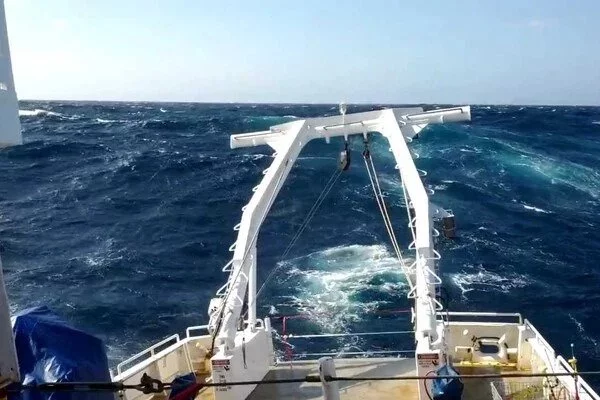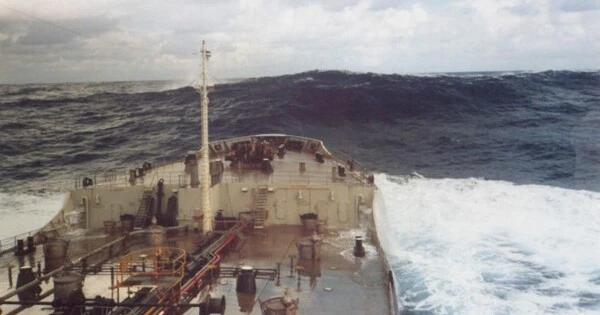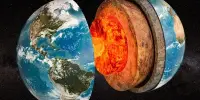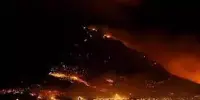Rogue waves are surface waves that are unusually large, unpredictable, and appear suddenly. They can be extremely dangerous to ships, even large ones. They differ from tsunamis, which are often imperceptible in deep water and are caused by water displacement caused by other phenomena (such as earthquakes). A sneaker wave is a rogue wave that appears at the beach.
Researchers investigated how rogue waves form and the likelihood of encountering them while navigating the rough waters of severe storms. The eastern Mediterranean Sea, a large basin surrounded by ancient cultural sites, is also a hotspot for climatology. However, the region has received comparatively little attention when it comes to understanding the extreme sea states that produce massive and potentially catastrophic waves.
Recognizing a knowledge gap, an international team of researchers led by Francesco Fedele, associate professor in Georgia Tech’s School of Civil and Environmental Engineering, investigated potential hazards for ship navigation in the eastern Mediterranean. They studied rogue waves, how they formed, and the likelihood of a ship encountering them while navigating the rough waters of intense storms. Their findings shed light on the nature of extreme waves in the Mediterranean Sea and have the potential to advance technology for predicting rogue waves and maritime navigation in extreme weather conditions.
Imagine that at a single point in the ocean, waves are coming from many directions. There is always a chance they will meet, pile up in amplitude, and create an enormous wave. This is what we call a rogue event.
Francesco Fedele
“Imagine that at a single point in the ocean, waves are coming from many directions,” Fedele said. “There is always a chance they will meet, pile up in amplitude, and create an enormous wave. This is what we call a rogue event.”
Rogue waves have long been observed in the western Mediterranean by eyewitnesses — sometimes travelers on cruise ships and have been known to cause structural damage and loss of lives. To examine the case of the eastern Mediterranean, Fedele teamed up with collaborators at the Technion-Israel Institute of Technology and the CAMERI Coastal and Marine Engineering Research Institute in Haifa, Israel. The team employed a novel theory of space-time wave extremes and considered the hypothetical scenarios of Israeli naval fleet ships navigating the waters of two major storms that occurred in the Mediterranean Sea in 2017 and 2018.
The researchers studied the frequency of rogue wave occurrences as encountered by an observer at a given point on the sea’s surface, such as an oil rig. The team’s statistical analysis indicated that the largest observed waves during the two major storms have similar characteristics to the catastrophic El Faro, Andrea, and Draupner rogue waves, in which the asymmetry of the waves’ crests and troughs was the dominant factor in creating rogue waves.

They discovered that, because the eastern Mediterranean basin is characterized by waves coming from all directions, rogue waves do not “steal” energy from neighboring waves or grow at their expense. This effect, known as modulational instability, has been employed in the past to understand rogue waves. But, according to Fedele, it is only relevant when waves travel in the same direction, like through a long channel, and therefore does not apply in realistic seas.
The team’s novel space-time analysis of the most intense sea states also demonstrated the ability to predict potential rogue hazards for ships of various sizes and cruise speeds navigating within the rough waters of the analyzed storms.
A surfer, according to Fedele, can provide a useful analogy for the space-time effect of waves.
“As we all know, surfers do not spend all day waiting for a large wave,” he explained. “They swim around an area to increase their chances of encountering large waves, and they always do. Similarly, a ship navigating waves will encounter more waves along its path, and the likelihood of encountering a rogue wave is greater than that of an oil rig.”
The team’s novel analysis of waves in space-time can also predict the possibility of rogue hazards for ship navigation. Fedele’s model has already been adopted by the National Oceanic and Atmospheric Administration for WAVEWATCH III, the national operational wave forecast model. According to Fedele, such a model can be expanded to account for ship motion and rogue hazards, and it has the potential to benefit shipping companies, maritime industries, and coastal communities.
















